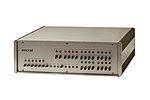Home computer
![]()
This article is computer history. For commercial computers designed for home applications, see microcomputers.
Home computer was a term used in the 1980s for a class of microcomputers used primarily in private households. By definition, these devices are personal computers in the narrower sense, with the home computer encompassing the portion of such devices that were found in the lower price segment and were intended more for entertainment purposes and for programming by the user. The rapid growth of home computers in the private sector brought broader sections of the population into contact with computers for the first time, which just a few years earlier had only been accessible to specialist staff in companies.
Among the unifying features of almost all early home computers of the 1980s was that they had a keyboard integrated into the housing, with which they were operated via command line commands, were designed to be connected to a television, and that the operating system permanently installed on a ROM memory chip also featured an interpreter for the easy-to-learn programming language BASIC. The most common microprocessors were those of the 6502 family and the Zilog Z80, which were usually clocked at about 1 MHz to 4 MHz and used initially 1 to 16, later up to 64 kBytes of RAM.
From around the end of the 1980s, models with the Motorola 68000 processor had great success, which already featured graphical user interfaces with mouse operation and were equipped with memory in the megabyte range. In the mid-1990s, however, most of these incompatible systems disappeared from the market, and PCs with the Windows operating system and x86 processors also became the standard in the private sector.
The development of home computers went hand in hand with the development of game consoles and computer games. For some home computer models there were technically almost identical devices as a game console, which only lacked the keyboard.
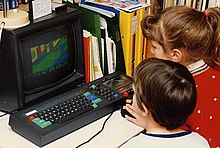
Children play the video game Paperboy on an Amstrad CPC 464 home computer in the 1980s.
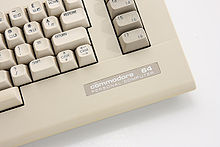
Home computer C64 with "Personal Computer" inscription
Forerunner
The first digital, programmable computer for home use was the relay computer Simon, introduced as early as 1949 by Edmund Berkeley, the founder of the ACM. Simon consisted of only 50 relays and had no microprocessor. Only a construction plan for Simon was commercially available, of which over 400 copies were sold in the first ten years of its availability.
The Micral N was another forerunner on the way to the home computer; the first of its kind with a microprocessor, in this case an Intel 8008. Production began in the spring of 1973. With the Altair 8800 from the supplier MITS, a mass-produced device came onto the market in 1975, which could be purchased as a kit for 397 US dollars, as a complete device for 695 US dollars. The equipment with a bus plug-in system for expansion cards according to the S-100 bus standard was trend-setting. With its toggle switches as input unit and light emitting diodes as output unit, however, this device does not correspond technically to what is understood by a home computer today. The same was true for the KIM-1 of the company MOS Technology, which was released in the same year. It had a 24-key input unit in pocket calculator format for direct input of HEX code and a 6-digit 7-segment LED display as output unit. As a result, these devices were largely unsuitable for average home users, and were also hardly attractive; they were bought mainly by hobbyist electronics enthusiasts and the few early computer enthusiasts. The numbers sold were therefore small.
Within the early hacker scene around the Homebrew Computer Club, which decisively pushed the development of the home computer, the MITS Altair 8800 enjoyed great popularity and served the members of the club as a core for their own extensions.
·
Micral N
(1973)
· 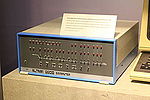
Altair 8800
(1975)
· 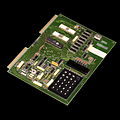
KIM-1
(1976)
1970s
The era of home computers in the modern sense, with a typewriter-like keyboard as the input unit and a screen (initially in the form of a converted television set) as the output unit, began in 1976 with the Apple I. It was designed as a single-board computer. It was designed as a single-board computer, with the user still having to obtain and elaborately configure parts such as the power supply, housing, screen and keyboard. As the first device in the world, it was affordable for private households at 666 US dollars and at the same time corresponded to the modern operating ideas of a home computer.
At the Consumer Electronics Show, which took place in Las Vegas (Nevada) in April, three models were presented to the interested public for the first time in 1977, which were not presented as kits, but as fully assembled devices ready for immediate use in the home or business. These included the low-priced TRS-80 (599 US dollars) from the large electronics chain RadioShack, the open-architecture but expensive Apple II (1298 US dollars) and the all-in-one model Commodore PET 2001 (795 US dollars).
In 1979, the Atari 400 was the first home computer to appear on the market that contained custom chips and was thus technologically ahead of the competition. In the same year, Texas Instruments used a 16-bit processor for the first time in the TI-99/4, although the computer was not able to establish itself. In 1980, Sinclair's ZX80 went on sale in the UK, based on Zilog's main Z80 processor and helping to establish a home computer industry outside North America for the first time.
In the years from 1977 to 1980, Tandy dominated the microcomputer market in the USA with the TRS-80; the then ubiquitous RadioShack stores were no match for the competitors' distribution network. Outside the USA, the market for microcomputers was still very small at that time, which was also related to the much higher prices for such devices there. In Germany, Commodore was the market leader, followed by Atari and Sinclair.
· 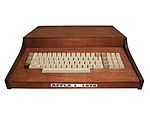
Apple I
(1976)
· 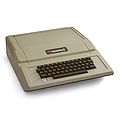
Apple II
(1977)
· 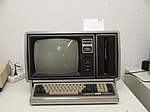
Tandy TRS-80
(1977)
· 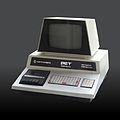
Commodore PET 2001
(1977)
· 
Atari 400
(1979)
· 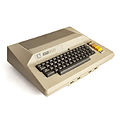
Atari 800
(1979)
· 
TI-99/4
(1979)
· 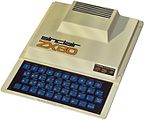
Sinclair ZX80
(1980)
Search within the encyclopedia
